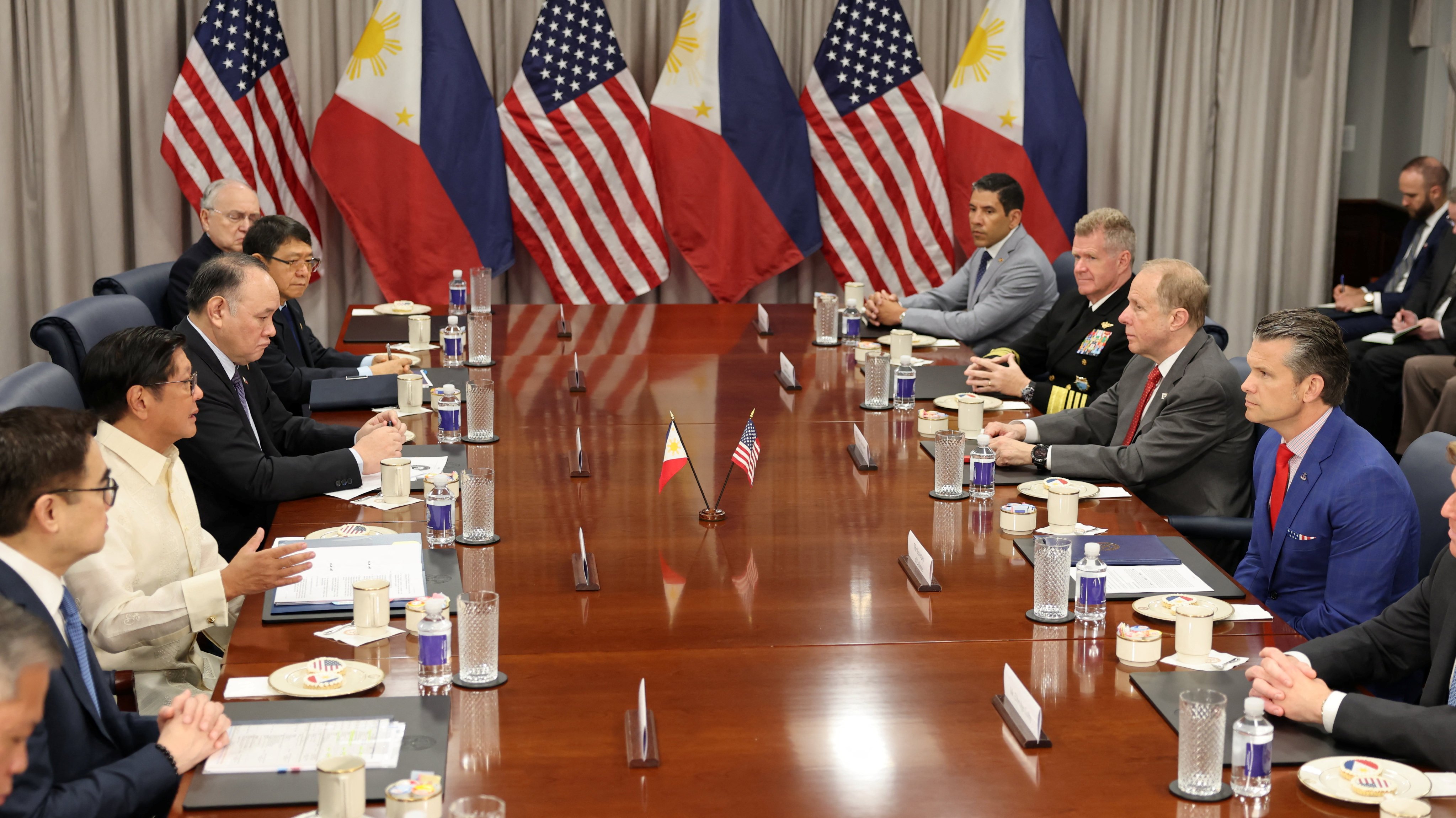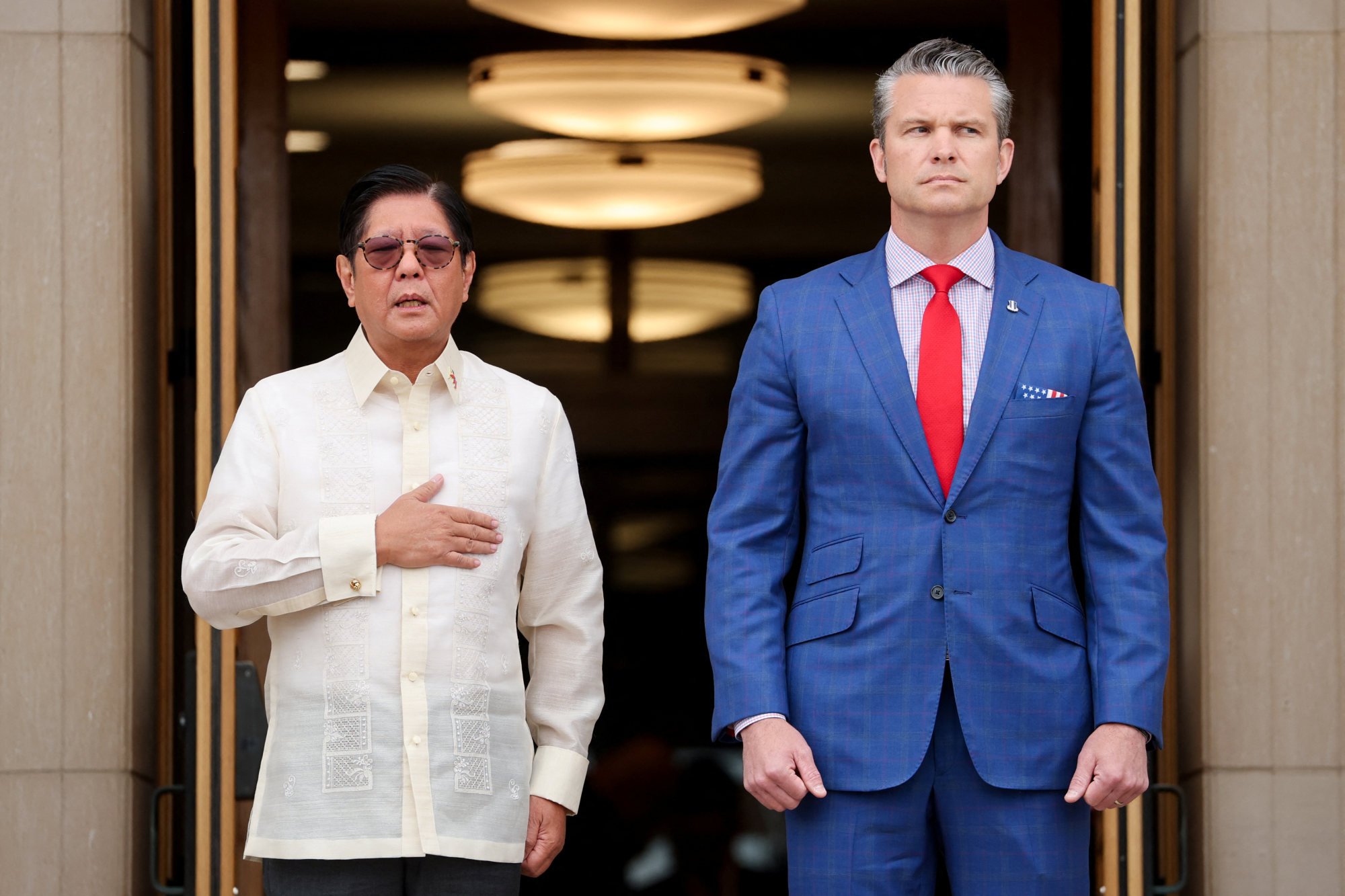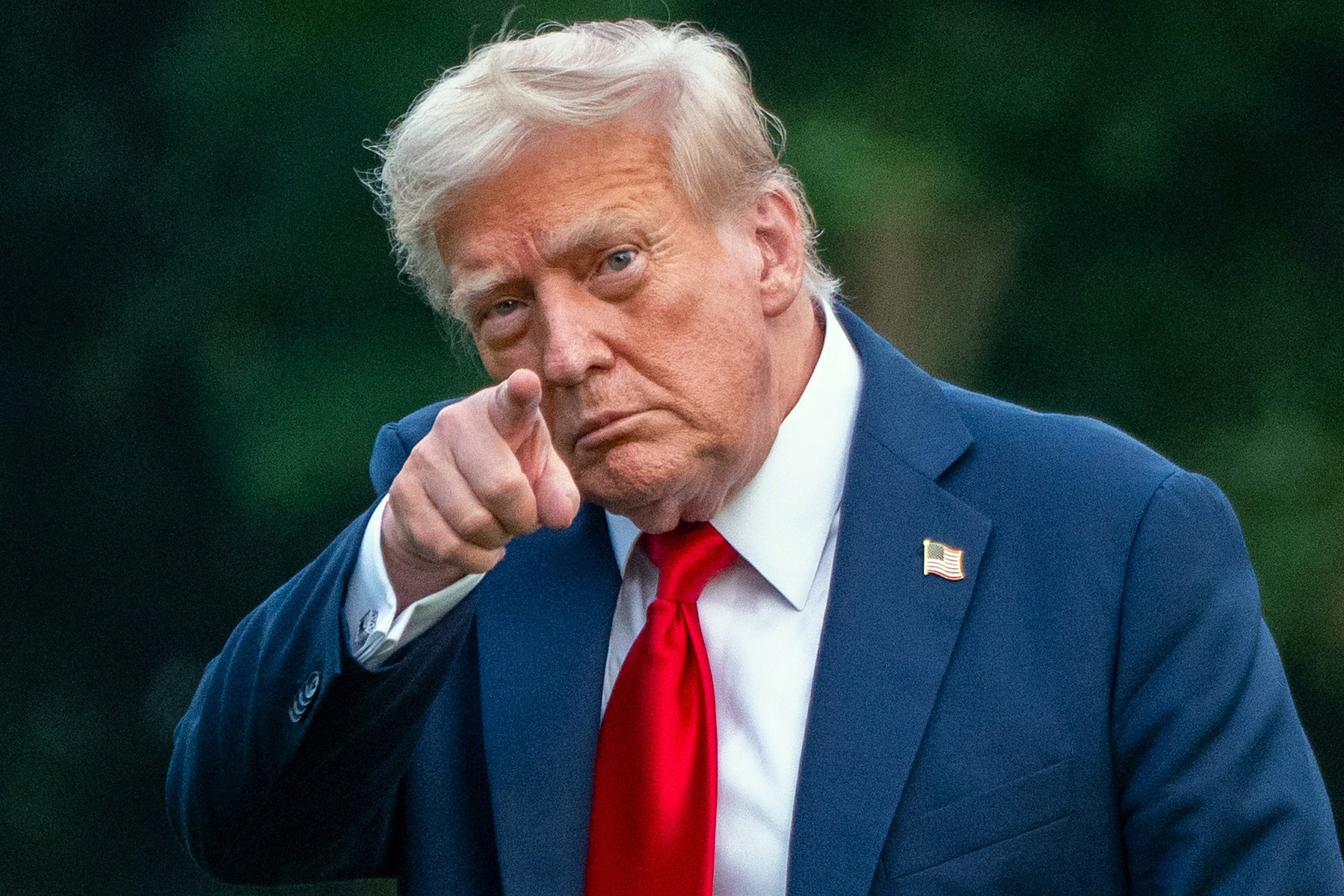Philippines’ Marcos to meet Trump in high-stakes trade talks as US tariff looms
The Philippine president could offer Trump military access and mineral rights in exchange for a lower US tariff, analysts say

Philippine President Ferdinand Marcos Jnr will meet his US counterpart Donald Trump for high-stakes talks on Tuesday that analysts say could see him trade military access and mineral rights for a lower tariff on his country’s exports.
“I intend to convey to President Trump and his cabinet officials that the Philippines is ready to negotiate a bilateral trade deal that will ensure strong, mutually beneficial, and future-oriented collaborations that only the United States and the Philippines will be able to take advantage of,” Marcos Jnr said before departing for Washington on Sunday.
He added that his “top priority for this visit is to push for greater economic engagement, particularly through trade and investment between the Philippines and the United States”.
Marcos is scheduled to meet Trump at the White House following discussions with Secretary of Defence Pete Hegseth and Secretary of State Marco Rubio on Monday.
The agenda was hinted at on July 10, when US Department of State spokeswoman Tammy Bruce said potential deals included private sector investment in the Luzon Economic Corridor, an agreement on “the Philippines’ wealth in critical minerals” and “trilateral cooperation in the Philippines on cybersecurity, energy [including nuclear energy] and investments in reliable and secure telecommunications networks”.
The Philippines could end up granting the US more access to military facilities under their Enhanced Defence Cooperation Agreement (EDCA), as well as offering favourable terms on mining concessions, potentially including rare earth minerals, analysts told This Week in Asia.
In return, the Philippines is expected to seek a lower tariff on its exports, a larger share of US foreign investment – especially in defence and security industries – and immigration safeguards for Filipinos living in the US, such as protection from forced deportation and reduced fees on remittances.

The trip comes with a sense of urgency, just days before Marcos delivers his annual State of the Nation Address next Monday, amid growing domestic criticism over the higher US tariff on Philippine goods.
In April, the US announced a so-called “reciprocal tariff” of 17 per cent for imports from the Philippines, which came barely weeks after Hegseth visited Manila to reaffirm Washington’s “ironclad commitment” to the alliance. A temporary suspension delayed implementation for 90 days, but the levy was raised to 20 per cent on July 8, just ahead of Marcos Jnr’s visit, despite ongoing trade negotiations.
The International Coalition for Human Rights in the Philippines (ICHRP) called Trump’s tariff “punitive” and a form of “naked bullying” that would harm the poorest Filipinos, while “turning the Philippines into a massive military base for war with China”.
Jonathan Ravelas, a financial risk analyst, described the situation over the trade talks as being “between a rock and a hard place”.
Since Washington might request the use of additional EDCA sites, Manila could leverage that demand to secure funding for its military modernisation programme, said Ravelas, managing director of eManagement for Business and Marketing Services.
Unhandled type: inline-plus-widget {“type”:”inline-plus-widget”}
The Philippines should offer zero tariffs on US agricultural imports in exchange for getting “most favoured nation” status for trade and technical help to help stabilise domestic food prices, he added.
It’s the art of the dealJonathan Ravelas, financial risk analyst
Asked why the US would impose a higher tariff on a long-standing security ally, Ravelas replied: “It’s the art of the deal. They need something. For us, taking advantage of the US supply chain of food and feeds, for them [it] could be minerals and bases access.”
Ron Acoba, founder and chief investment strategist at Trading Edge Training & Consultancy, said the US would likely ask for zero or lower tariffs on its goods, particularly agriculture. In response, the Philippines could reduce tariffs to zero on some US goods, Acoba told This Week in Asia.
The US would also look to expand EDCA sites, especially in Luzon, and seek greater access to Philippine mineral resources, Acoba said.
“Since the Philippines has pivoted away from China, it has no choice but to lean on the US in terms of defence,” Acoba said. Without Washington’s backing, Manila would run the risk of being pushed back by Beijing as it was in the Spratly Islands some years ago, he added.
While the Philippines is an exporter of raw minerals like nickel to China, it could feasibly sell them to the US as well, according to Acoba.
“As part of the deal, we can ask [the US] for investments in refining facilities so down the line we can also export finished goods rather than just ore,” he said.
“The US is essentially treating Asean as a block. As for the tariffs involved, it’s more on a transactional basis, not whether a country is a military ally or not.”

Semiconductor industry leaders in the Phllippines warned last week that the US tariff could stunt growth.
Danilo Lachica, president of the Semiconductor and Electronics Industries in the Philippines Foundation, Inc. (SEIPI), said in a television interview that the 20 per cent tariff was “disappointing”, especially as the deficit posted by the US in its trade with the Philippines was “much, much less” than that for its trade with Vietnam.
Two-way goods trade between the US and the Philippines totalled US$23.5 billion last year, with Washington posting a deficit of US$4.9 billion, according to data from the Office of the United States Trade Representative (USTR). In comparison, the US posted a deficit of US$123.5 billion in its goods trade with Vietnam last year, separate data from the USTR shows.
Lachica pointed out that if the US tariff for the Philippines were to remain at 20 per cent – the same level for Vietnam after negotiations between Washington and Hanoi – Manila would lose out to “one of our biggest competitors”.
According to Fermin Adriano, a former agriculture undersecretary serving then president Rodrigo Duterte, the tariff would have less of an impact on Philippine agriculture as coconut oil was the only major item exported to the US for the sector.
In contrast, US agricultural exports to the Philippines such as soybeans, chicken, pork and wheat might surge if Trump were to succeed in seeking lower tariffs from Manila, Adriano said. Many American farmers – many of whom were Trump’s supporters – could not sell to China due to Beijing’s retaliatory move over Washington’s tariffs, prompting the US to seek alternative markets, he added.
“It is on the agri import side that we will have a greater impact as we import a lot of soybeans, chicken, pork and partly wheat from the US.”